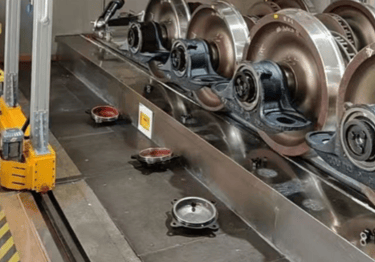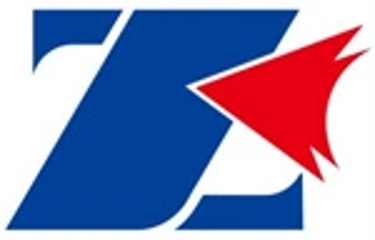How to Slash Railway Wheel Assembly Costs While Speeding Up Production?
Railway wheel assembly is a precision-driven process where every second counts. Traditionally, adapting production lines for varying bolt patterns (like 3-bolt wheel ends vs. 4-bolt end covers) meant investing in specialized machinery for each task—a costly and inflexible approach. But what if one solution could handle both? Here’s how we reimagined the process to maximize efficiency and minimize costs.
Michelle Yeh
7/18/20251 min read


The Challenge: Dual Bolt Patterns, One Goal
Our client faced a common yet complex demand:
Tighten 3 bolts on railway wheel ends.
Secure 4 bolts on wheel end covers.
The goal? Streamline assembly without compromising quality or inflating expenses. Conventional setups would deploy separate 3-axis and 4-axis machines—doubling equipment costs, footprint, and maintenance.
Our Solution: Two 3-Axis Variable Position Tightening Machines
We flipped the script with an elegantly adaptable approach: two identical 3-axis variable position tightening machines. Here’s why it’s revolutionary:
1. One Machine, Two Functions
Each unit’s axes dynamically reposition to handle both 3-bolt and 4-bolt patterns. No hardware swaps, no downtime. For a wheel end: the machine configures for 3 bolts. For an end cover: it instantly shifts to a 4-bolt layout.
2. Cost Efficiency Unlocked
Reduced Hardware: No need for a dedicated 4-axis machine. Two flexible units replace three rigid ones.
Lower Maintenance: Identical machines mean interchangeable parts and simplified training.
Scalability: Adding a third unit? Easy. Need to reconfigure bolt patterns? Done via software.
The Tangible Benefits: Speed, Savings, and Simplicity
20–30% Faster Cycle Times: Parallel processing eliminates bottlenecks.
15–25% Lower Capital Costs: Fewer machines, smaller footprint.
Zero Changeover Delays: Software-triggered reconfiguration between jobs.
Future-Proof Design: Adapts to new bolt patterns without hardware retrofits.
Why This Matters for the Industry
Railways demand reliability, but assembly lines shouldn’t lag in agility. Our dual-machine solution proves that standardization and flexibility aren’t mutually exclusive. By choosing smart automation over redundant specialization, we cut costs without cutting corners.
“Efficiency isn’t just speed—it’s doing more with less. Two adaptable machines outpace four fixed ones.”
The Bottom Line
In an era where every second and dollar matters, rethinking “the way it’s always been done” sparks real progress. For railway manufacturers, this approach isn’t just an upgrade—it’s a leap toward leaner, smarter, and more resilient production.
Ready to transform your assembly line?
[WhatsApp : +86-159-0425-9668] to explore tailored solutions!
Overseas Department
Michelle Yeh
Email:michelleyeh@dlkonson.com
WhatsApp: +86-159-0425-9668
Follow Us
Factory Location
Dalian Kangzhan M & E Engineering Co.,Ltd
Headquarters:No.6 Fujiagou, Xiajiahezi Village, Ganjingzi Dist, Dalian China
Regional Manufacturing Facilities :No.88 Wangjiagou, Xiajiahezi Village, Ganjingzi Dist, Dalian
Dalian Carry Times Technology Ltd
Registered Address: No. 28, Liancheng Road, Lianshan Street, Pulandian District, Dalian,Liaoning,China
Tel: +86-411-86603220
Fax:+86-411-86409908




